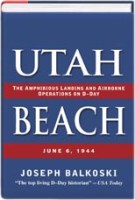
With Nothing but Victory: The Army of the Tennessee, 1861-1865 Dr. Steven E. Woodworth continues to show he is an excellent writer. This is a long book, 641 pages. It took me about thirty two days to read it. Woodworth’s writing is a refreshing, narrative style. His goal of giving attention to all levels of the army from private to general was accomplished. The thoughts, actions, and attitudes of the soldier he sought to communicate rang clear in his writing.
My initial thought was this may be the definitive work on the Civil War in the west. My undergraduate degree in history included course work in US Military History, Antebellum History, Civil War and Reconstruction. I am well read in the area of personal memoirs and definitive biographies of key persons in the US Civil War. My point in sharing my background is this – Dr. Woodworth certainly heavily leaned on the Personal Memoirs of US Grant. I had read that book recently so it was very fresh in my memory. It would have been interesting to see more sources from the southern soldiers who fought the Army of the Tennessee. In some battles I found that some of the other Union Armies’ contributions or lack of contribution were not covered in the detail I would have enjoyed. I believe this is a definitive work on the Civil War in the west.
With the above opinion stated, I still strongly recommend the book and will read it again. Steven Woodworth’s writing style is so enjoyable that I fear academic historians may be jealous of him as has happened with other best selling historians.
The story of how the army develops is shared with many sources. I was distracted initially by all the footnoting, but after a while ignored most unless I was curious about the statement. It was interesting to learn of the training and the logistical skills of the leadership - Grant and Sherman.
Some may think there is too much focus on General Grant prior to the fall of 1863. Grant was such a key figure that the coverage is merited. At times the author seems like a Grant apologist. Maybe some writers have diminished Grant’s contribution. Having a great, great, grandfather who served and died in the Army of the Tennessee I have had interest in learning what I can of the grand army. I learned new information on Grant. So my time was well spent.
I found the treatment of General Henry Halleck leadership role over Grant enlightening. I was previously unaware of General John A. McClernand and his never ending politicking and rumor spreading. Seeing the roles of General like Dodge, Hampton, McPherson and Logan sowed the seeds for further reading on some of these men.
The narrative made feel like I was there with the army as the moved from Cairo to Fort Henry and Fort Donaldson, to Shiloh, to Corinth, to Vicksburg and that whole complex campaign including Port Gibson, Jackson, Champions Hill and Vicksburg and Meridian.
The battles around Chattanooga were as clearly explained as I have every read. The coverage of the Atlanta campaign and movement through Georgia were excellent. I would love to see a book by him on just this campaign. It had points of view and information I have not encountered. I twice have lived in Georgia (mid 1970’s as a new second lieutenant and early 1980’s fresh with Master’s in hand living in Atlanta). I was always amazed at how Georgia natives acted as if Atlanta fell last week and the foraging was still happening. His narrative on the march across Georgia was enlightening. Woodworth's account of the movement from Savannah through South Carolina is rich in detail that rivals any other resources known. We understand why South Carolina was divested by the Sherman’s army. Then the march through North Carolina, the way Logan keeps Raleigh from being burned and then ultimate the movement to Washington, DC and the May 24th pass in review was well done.
I did not find just another retelling of the history of the Army of the Tennessee. It is a fun to read narrative written by a good story teller. Thank goodness this is not just another dry lengthy, dry historical paper. History can be well written and interesting. He made it interesting by sharing the soldier’s thoughts, emotions, and victories through the liberal use of diaries. We learned the heart of the Army of the Tennessee. We understand why and how it fought and how it developed esprit de corps.
I recommend adding this book to every library of those with an interest in the US Civil War. Read and reviewed by Jimmie A. Kepler.

































